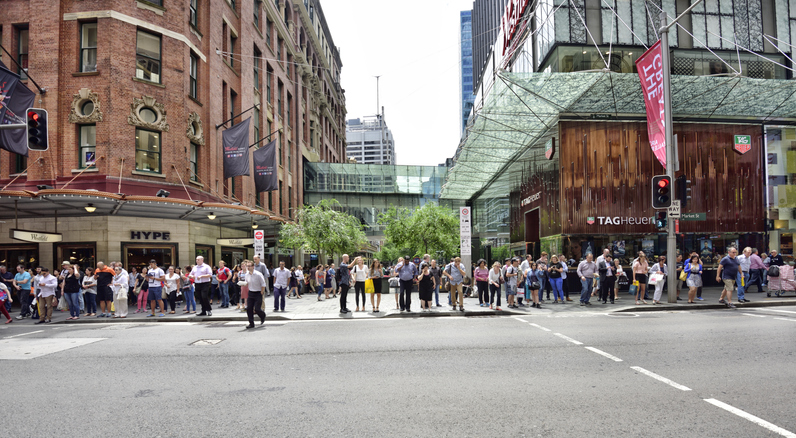The Best Fitness Apps for Working Out At Home
Pick a fitness platform that has exercises for your fitness level.
I’m a card-carrying member of Club Living Room. Don’t get me wrong: I used to hit the gym at least three times a week. But when I started working—and working out—from home, I became a convert. Mostly because of fitness apps.
These apps saved me money, and fit anywhere in my chaotic schedule. Even with the return to in-person workouts, I plan to keep them in my routine. For most people, regardless of age, fitness level or amount of disposable income, the smartest path to fitness is through an app.
Sure, connected-gym hardware offers an integrated, distraction-free, sensor-laden social experience. But it has high upfront costs plus a monthly subscription, and often runs proprietary software that doesn’t work with other content providers.
Fitness apps, on the other hand, can be customized to work at home or in a gym, with or without equipment, as well as outdoors. They can make working out from home, or wherever you are, easy, fun and effective—as long as you pick the right one. The number of options is overwhelming: App Annie, a mobile analytics firm, estimates that the iOS and Android app stores had at least 71,000 health-and-fitness apps world-wide in 2020.
What should a good fitness app offer? And how do you use an app to create a well-rounded, sustainable exercise routine?
“Fitness is not one size fits all. A good app will account for that by offering variety,” said Zakkoyya Lewis-Trammell, assistant professor of kinesiology at California State Polytechnic University, Pomona. That could mean a mix of workouts by length, intensity and style that allows you to choose, depending on your needs and fitness level.
The most important aspect of a fitness app is that it offers exercise you like to do, according to Aimee Layton, assistant professor of physiology at Columbia University Medical Center and member of Peloton’s Health and Wellness Advisory Council, or combines something you like to do with exercising—for instance, watching TV while using an indoor biking app such as Zwift.
“Self-efficacy,” or believing that you can successfully do what the program is asking of you, is another critical feature, Dr. Layton says.
After testing dozens of different fitness apps, I have a few tips of my own:
• Free content on YouTube and free trials can help you figure out which kind of workouts you enjoy doing before committing to a program. (On iOS and Android, you can immediately unsubscribe to avoid being charged.) A paid subscription, however, can mean a better experience and greater commitment.
• During an activity, turn on Do Not Disturb. An email pop-up can quickly cut a workout short. (On iOS, you can even set up a fitness-specific Focus mode to allow truly important stuff through.)
• Access to downloadable classes is useful, especially for frequent travellers or people with poor internet connectivity.
The following apps, my favourites during the past year, have all of the above in mind. They kept me engaged with many different types of workouts, as well as options for warm-ups and cool-downs to prevent injury. But, of course, working out is a highly personal activity, so try before you buy—all of these platforms offer a free trial.
Peloton Digital
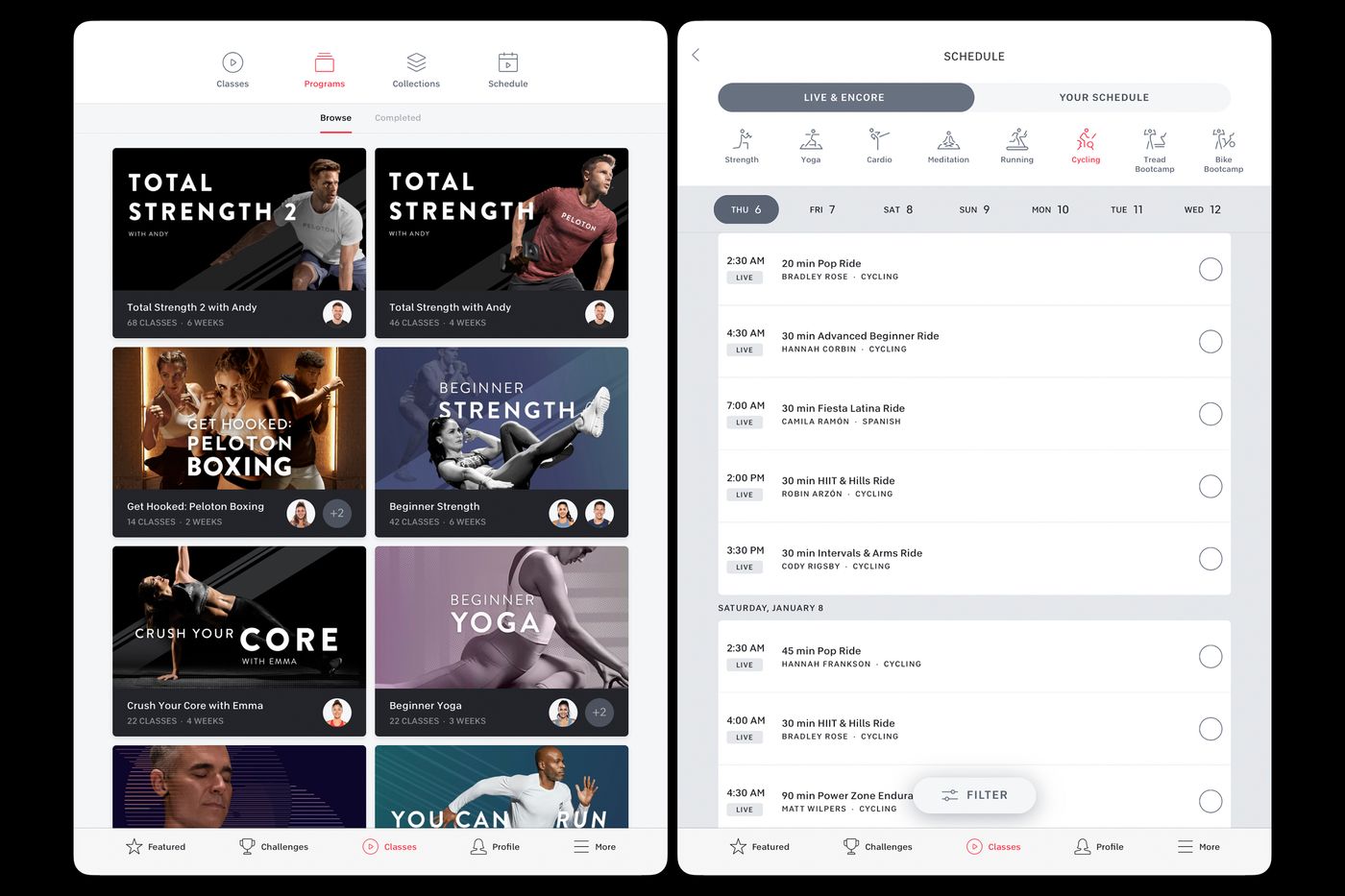
It’s for Music-motivated fitness enthusiasts
Price: $16.99 a month
Platforms: iOS, Android, web, Apple TV, Amazon Fire TV, Roku, Android TV
Peloton offers plenty to its app subscribers, customers who don’t have the company’s pricey bike or treadmill. Tune into multiple live-streamed classes a day, or download on-demand workouts offline. The app’s music-themed Artist Series workouts are best: Try the BTS ride, AC/DC full-body strength class and Beyoncé dance cardio. There are guided outdoor runs and walks, too. You can connect a Bluetooth heart-rate sensor or Apple Watch to see a “strive score” based on heart-rate zones. App users can’t see how their metrics stack up against other members’ on Peloton’s leaderboard—that’s exclusive to the people who own its equipment.
Alo Moves
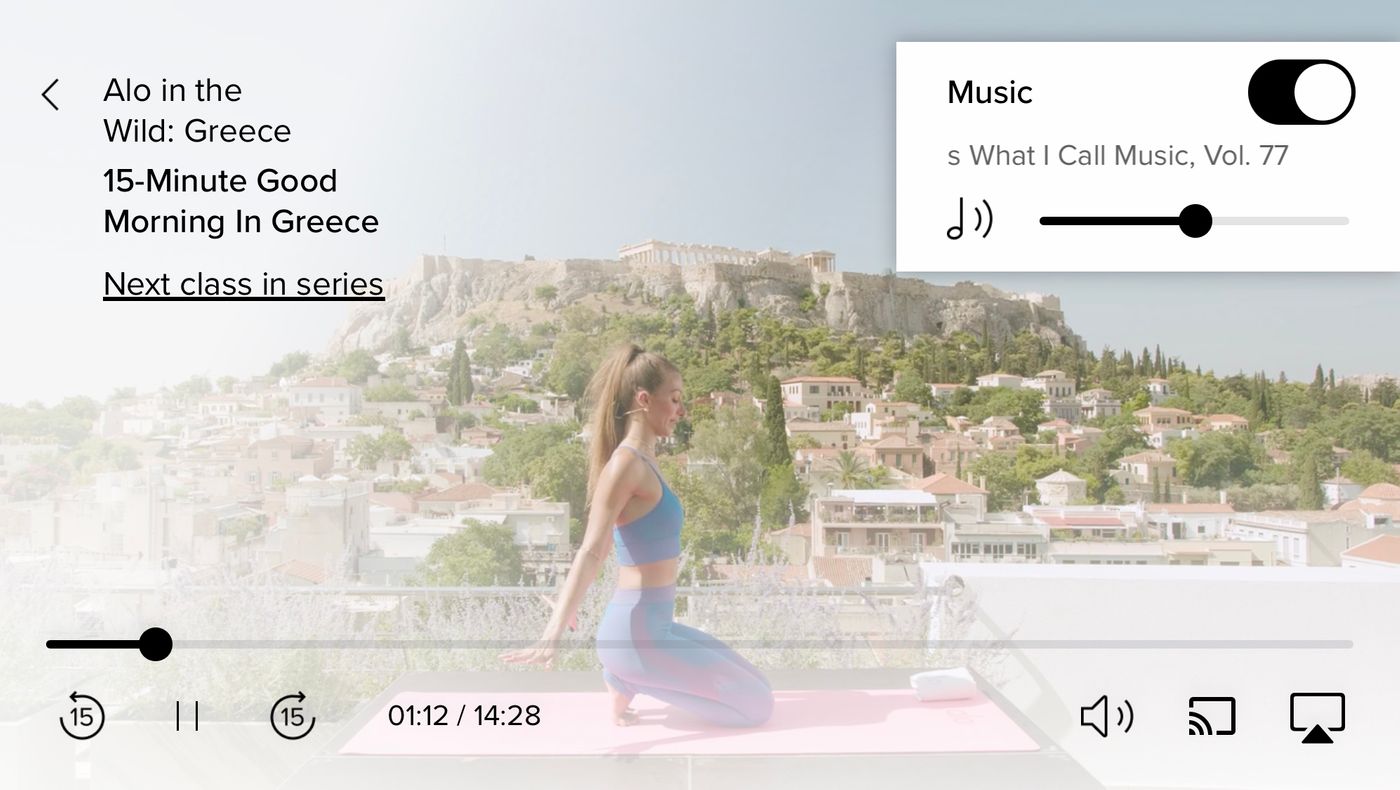
It’s for: Those focused on mindfulness
Price: Approx. $28 a month or $276 a year
Platforms: iOS, Android, web, Apple TV, Chromecast
Alo Moves’ library is packed with content for people who prefer to move on a yoga mat. From challenging power yoga to epic sound-bath meditation, the app features a range of classes. There are barre, Pilates and strength-based workouts, as well. Don’t know where to start? Drop into one of Alo Moves’ series, which include a virtual yoga retreat to the island of Santorini. If you can’t be in Greece, take your workout outside: Any class you bookmark can be downloaded offline.
Sweat
It’s for: People who want a plan
Price: $29 a month, or $177 a year.
Platforms: iOS, Android, web
Sweat is a personalized training app based on 37 different programs that range from two weeks to more than 24. After you select a program, the app plots your workout schedule on a calendar. Instead of a guided studio-style workout, Sweat assembles personalized exercises for each workout. You can input the equipment you have access to, choose your own playlist, select the pre-workout warm-up and substitute any exercises that are too easy or difficult. And if you need meal inspiration, the app suggests daily healthy recipes for breakfast, lunch, dinner and a snack. Unfortunately, there’s no support for offline workouts.
Apple Fitness+
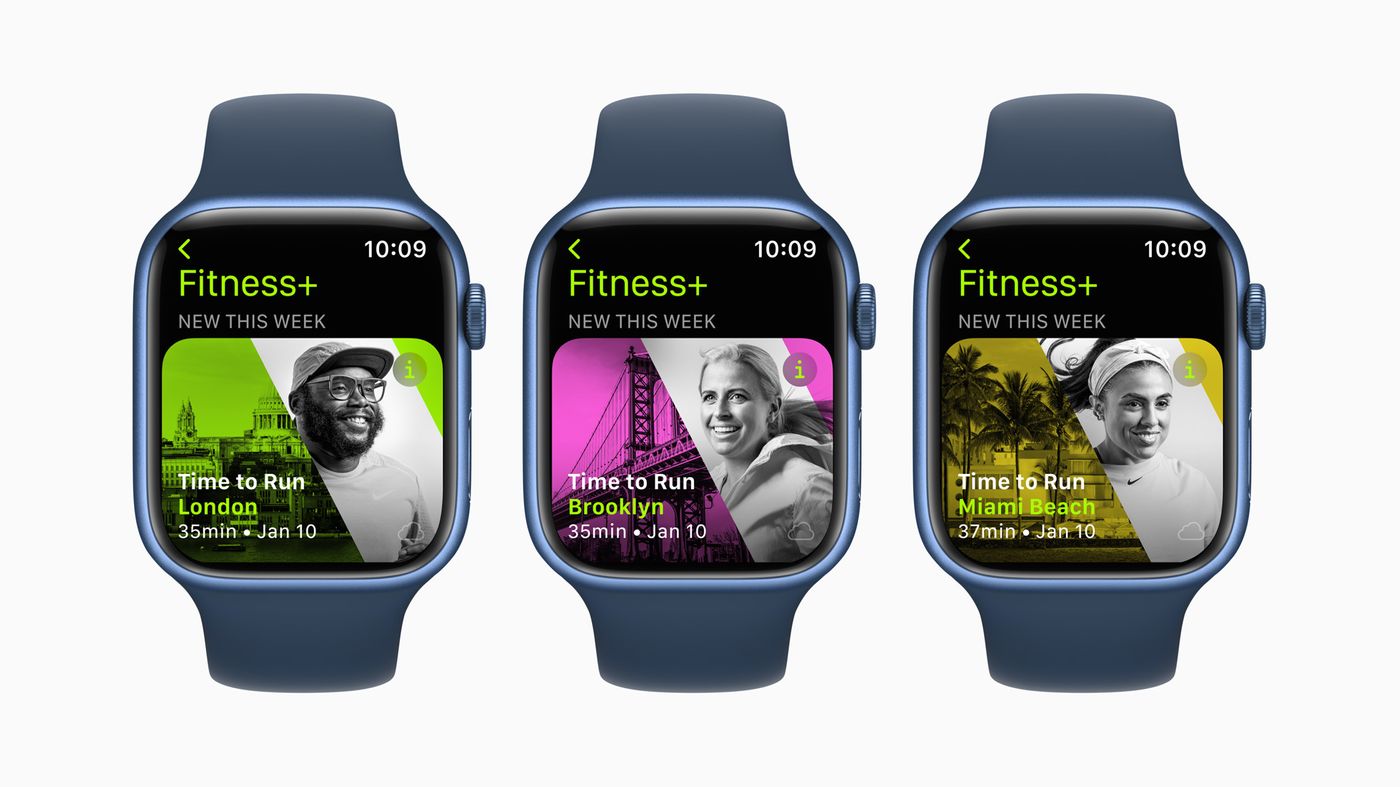
It’s for: Apple Watch users
Price: $14.99 a month or $119.99 per year.
Platforms: iOS, Apple Watch, Apple TV
Apple’s platform features guided activities across 10 different disciplines, including cycling and Pilates. Many of the workouts, which can be streamed or downloaded, are beginner and low-impact; there are programs designed specifically for older adults and people who are pregnant. Fitness+ does require users to own a Series 3 Apple Watch or newer. Watch stats, such as heart rate and calories, show up on screen during workouts. On Monday, the app launches guided, audio-based outdoor running workouts, called Time to Run. New episodes will be delivered weekly, and downloaded to the paired Apple Watch.
Fitness+ is a better value when it’s shared: Everyone in your iCloud household (up to six people) can use a single subscription—but they all need an Apple Watch.
Future
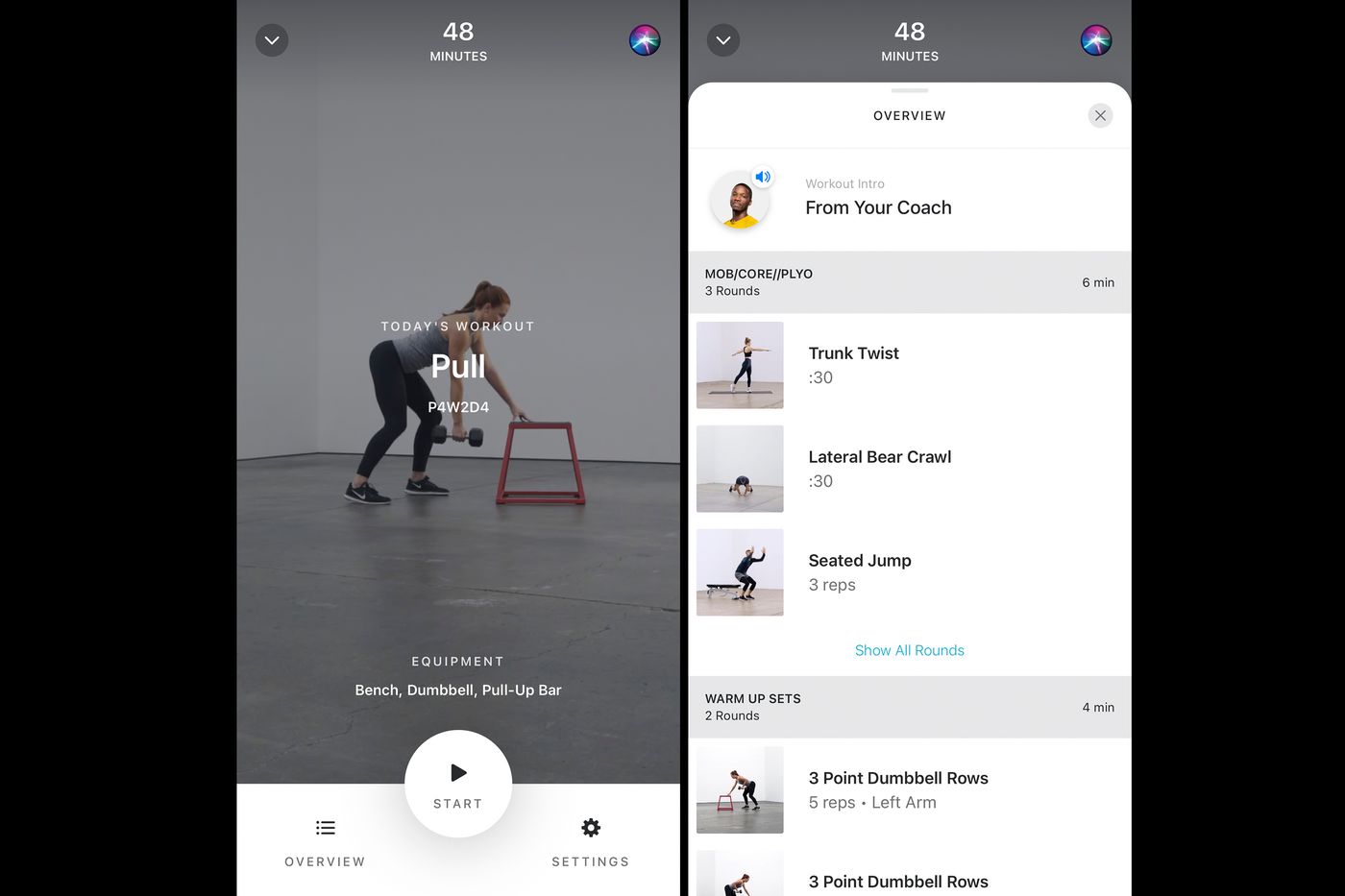
It’s for: People who want personal training and accountability
Price: Approx. $207 a month
Platforms: iOS and Apple Watch
Picking a workout, like picking what to watch on Netflix, can be daunting. Future takes the guesswork out of crafting a training plan. First, you’re paired with a live personal trainer, with whom you’ll discuss your schedule, equipment and goals over FaceTime. Then, every week, your coach will send a schedule that includes a personalized set of exercises, and track your progress on your Apple Watch, which is required. (The company plans to expand to Android this year.)
You can upload videos of your workouts to get feedback on your form. Travelling or need a rest day? Message your trainer through the app to modify your exercises accordingly. The app’s primary feature is accountability: Your trainer might nudge you if your Apple Watch stats suggest you aren’t sticking to the plan.
Reprinted by permission of The Wall Street Journal, Copyright 2021 Dow Jones & Company. Inc. All Rights Reserved Worldwide. Original date of publication: January 9, 2022.
 Copyright 2020, Dow Jones & Company, Inc. All Rights Reserved Worldwide. LEARN MORE
Copyright 2020, Dow Jones & Company, Inc. All Rights Reserved Worldwide. LEARN MORE
This stylish family home combines a classic palette and finishes with a flexible floorplan
Just 55 minutes from Sydney, make this your creative getaway located in the majestic Hawkesbury region.
There are Corvette fans for whom the base US$68,300 car is plenty powerful enough. After all, it produces 495 horsepower and can reach 60 miles per hour in 2.9 seconds. But hold on, there’s also the approximately US$115,000 Z06—with 670 horsepower and able to reach 60 in 2.6 seconds. These split seconds are important for busy people—and for marketing claims. And if that’s not enough go power, there’s the even more formidable 900-horsepower ZR1 version of the Corvette, starting around US$150,000. The hybrid E-Ray, at US$104,900, is pretty potent, too.
But if they’re still too slow, fans of American-engineered muscle can consider the exclusive Texas-built Hennessey Venom F5, a limited-edition carbon-fibre hypercar. Ten years ago, the Hennessey became the world’s fastest production car, defeating the Bugatti Veyron Super Sport, with a top speed of 270.49 miles per hour.
That world title is much sought after, and is currently held by the Sweden-built 1,600-horsepower Koenigsegg Jesko Absolut, with a two-way average top speed of 277.8 mph. But Hennessey is still very much a contender. The company is hoping the 1,817-horsepower F5 (with 1,192 pound-feet of torque) can exceed 300 mph on the track this year.

Hennessey photo
Hennessey’s previous Venom GT model (introduced in 2010) was based on the Lotus Exige, with a GM LS-based engine, and was built by partner Delta Motorsport. Spokesman Jon Visscher tells Penta , “The new Venom F5, revealed in 2020, is a 100%bespoke creation—unique to Hennessey and featuring a Hennessey-designed 6.6-litre twin-turbo V8 engine boasting 1,817 horsepower, making it the world’s most powerful combustion-engine production car.” Leaps in performance like this tend to be pricey.
This is a very exclusive automobile, priced around US$2.5 million for the coupe, and US$3 million for the F5 Roadster announced in 2023. Only 30 Roadsters will be built, with a removable carbon-fiber roof. The 24 F5 coupes were spoken for in 2021, but if you really want one you could find a used example—or go topless. In a statement to Penta , company founder and CEO John Hennessey said that while the coupe “is now sold out, a handful of build slots remain for our Roadster and [track-focused] Revolution models.”
Only 24 Revolutions will be built in coupe form, priced at US$2.7 million. There’s also a rarefied roadster version of the Revolution, with just 12 to be built.

Hennessey photo
The Venom F5 coupe weighs only 3,000 pounds, and it’s not surprising that insane speeds are possible when combined with a hand-built motor (nicknamed “Fury”) created with power uppermost. The V8 in the F5, installed in a rear mid-engine configuration, has a custom engine block and lightweight forged aluminium pistons, billet-steel crankshaft, and forged-steel connecting rods. Twin turbochargers are featured. The F5 can reach 62 mph in less than three seconds, but top speed seems to be its claim to fame.
The driver shifts the rear-wheel-drive car via a seven-speed, single-clutch transmission with paddle shifters. The interior is not as spartan or as tight as in many other supercars, and is able to handle very tall people. The butterfly doors lift up for access.
“With 22 customer Venom F5 hypercars already delivered to customers around the world, and a newly expanded engineering team, we’re focusing the Venom F5 on delivering on its potential,” Hennessey says. “Breaking 300 mph in two directions is the goal we aim to achieve toward the end of this year to claim the ‘world’s fastest production car’ title.”
Hennessey says the car and team are ready. “Now the search is on for a runway or public road with a sufficiently long straight to allow our 1,817-horsepower, twin-turbo V8 monster to accelerate beyond 300 mph and return to zero safely.” The very competitive Hennessey said the track-focused Revolution version of the F5 set a fastest production car lap around Texas’ 3.41-mile Circuit of the Americas track in March, going almost seven seconds faster than a McLaren P1.
The Revolution features a roof-mounted central air scoop (to deliver cool air to the engine bay), a full-width rear carbon wing, larger front splitter and rear diffuser, tweaked suspension, and engine cooling. It’s got the same powertrain as the standard cars, but is enhanced to stay planted at otherworldly speeds.
Just 55 minutes from Sydney, make this your creative getaway located in the majestic Hawkesbury region.
Consumers are going to gravitate toward applications powered by the buzzy new technology, analyst Michael Wolf predicts




















